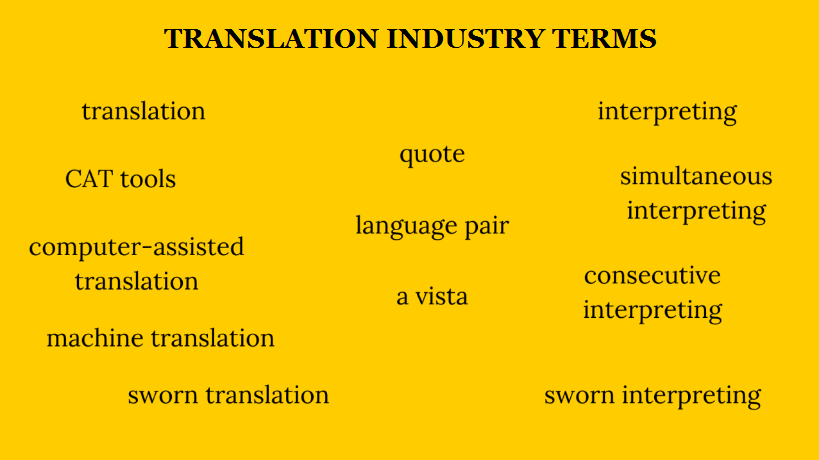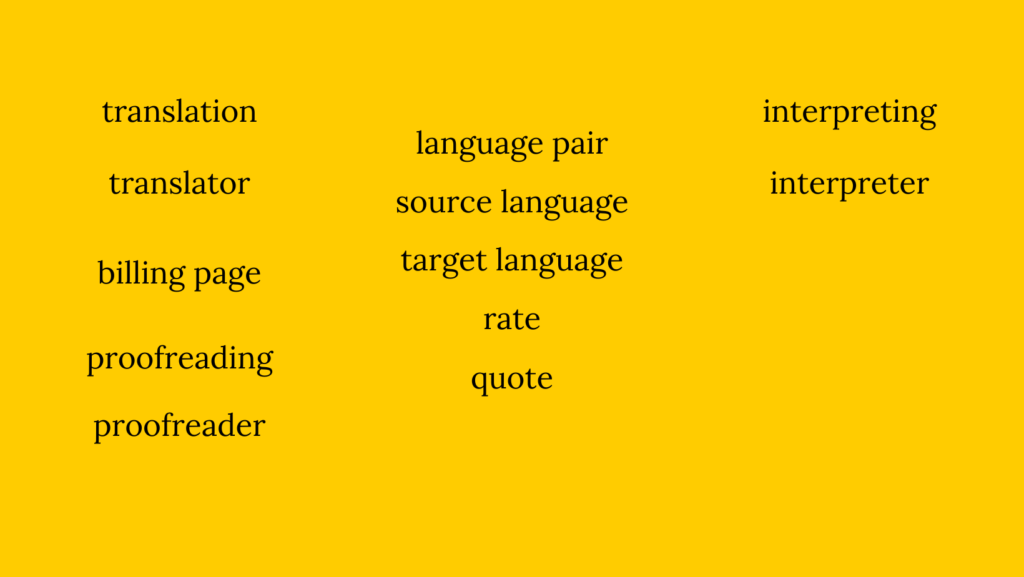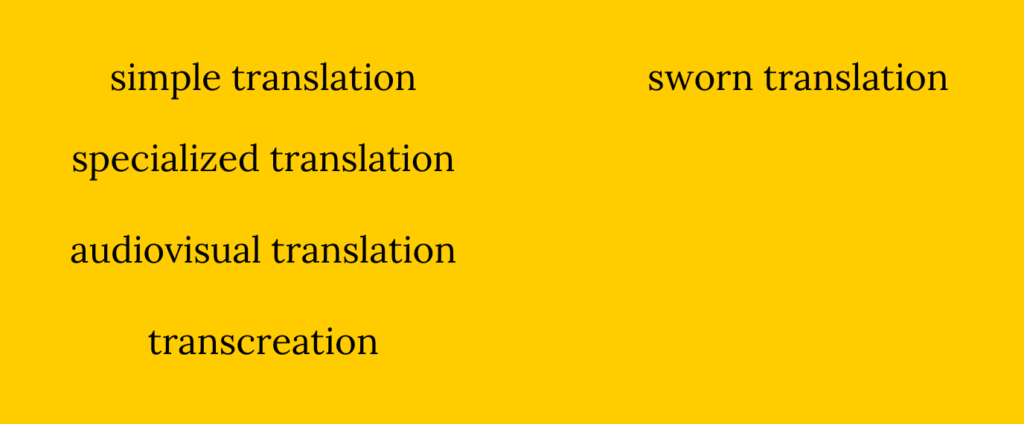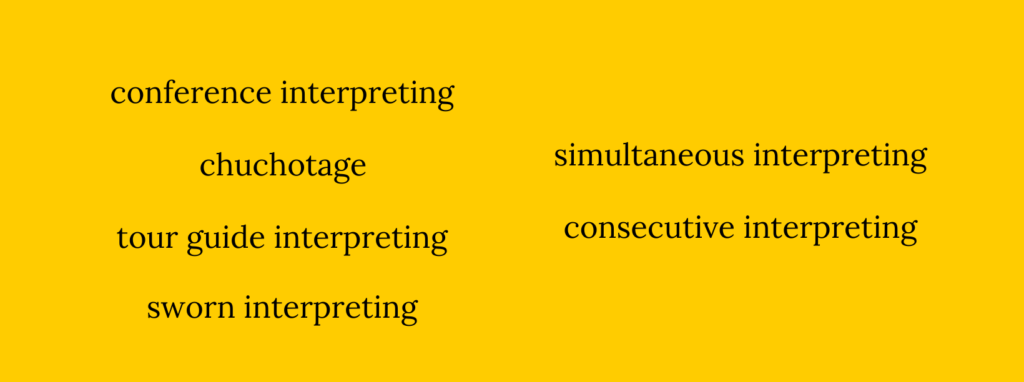
Translation industry terms
For me as a translator, it’s very important to meet my client’s expectations, and that you are satisfied with my services. I want the whole translation process, i.e. all necessary steps I take to provide you with a high-quality service, to be clear. I explain everything when discussing project details with you. But I am aware that sometimes you would like to know a little bit about it even before you reach out to me. Why? To have an overview of the translation industry, and dispel your doubts. That is why I have created this list of translation industry terms. I have gathered in one place the terms we language professionals use on a daily basis. Each term goes with its definition, and is explained in the simplest way.
! The list may also be useful for starting out translators who want to get familiar with more translation industry terms.
BASIC TRANSLATION INDUSTRY TERMS

TRANSLATION: a written conversion of content/documents from one language into another. In some cases a document or content is translated into many languages, e.g. product/service descriptions, websites, apps, manuals.
TRANSLATOR: a person who translates a document.
INTERPRETING: an oral conversion of a speech (talk, interview, etc.) from one language into another. Events such as summits and conferences are translated very often into many languages.
INTERPRETER: a person who interprets a speech.
SWORN TRANSLATOR/INTERPRETER: a translator/interpreter who is entered into the register of sworn translators kept by the Minister of Justice, and translates documents and interprets for Civil Service (court, notary’s office, police station). In order to become a sworn translator/interpreter, one needs to pass the official state examination administered by the Examination Board at the Ministry of Justice.
SOURCE LANGUAGE: a language from which a document/content is translated / a speech is interpreted.
TARGET LANGUAGE: a language into which a document/content is translated / a speech is interpreted.
LANGUAGE PAIR: a combination of two languages (language dialects) in which a translator or interpreter works, e.g. English>Russian, Polish>German. The former language in a language pair refers to a source language and the latter, to a target language.
Some translators/interpreters use language codes instead of full language names. For example EN>PL / EN-PL (English into Polish), ES>PL / ES-PL (Spanish into Polish). All language codes are defined in ISO 639 set of standards.
Many translators and interpreters work with more than one language pair. My language pairs are English>Polish and Spanish>Polish.
RATE: a price per word/page (translation) or a price per hour (interpreting).
QUOTE: information about the cost and time of delivery of a service. To calculate the cost, a translator usually counts the number of words contained in a document and multiply it by a rate per word.
BILLING PAGE: settlement base of a translation quote. It is expressed in characters with spaces or words. In case of a simple translation a standard billing page is 1800 characters with spaces or 250 words. For some translation agencies, it’s 1500 or 1600 characters with spaces. In case of a sworn translation, in turn, a standard billing page is always 1125 characters with spaces.
PROOFREADING: a revision of a translation in terms of linguistic correctness, i.e. punctuation, spelling, grammar and style of a language. It also takes into account the cultural aspects of the target audience. According to the second pair of eyes rule, proofreading is done by other translator. The term means that one translator translates a text, and the other proofreads the translation. Two unrelated translators working on a text ensure delivering a high-quality service.
PROOFREADER: a person who proofreads a translation.
TYPES OF TRANSLATION

- SIMPLE TRANSLATION: translation of unofficial documents such as books, articles, information brochures, e-mails, CVs.
- SPECIALISED TRANSLATION: translation of a more complex text in terms of terminology. A translator needs to perfectly know a field in question. There are several types of a specialised translation, marketing, legal, political, IT, technical, science and literary among others.
- AUDIOVISUAL TRANSLATION (AV) – translation of a content where the text goes with the image, e.g. webinars, series, movies and videos. There are three types of AV: voice over, subtitling, dubbing. Examples of software used for AV are Subtitle Workshop, Subtitle Edit, EZ Titles.
- TRANSCREATION (translation + creation) – a creative translation of marketing content such as slogans, product/service descriptions, ad campaigns. It’s aim is to convey the meaning to the target language in a way to create the same impact on a target audience as on an audience of a source language.
- SPECIALISED TRANSLATION: translation of a more complex text in terms of terminology. A translator needs to perfectly know a field in question. There are several types of a specialised translation, marketing, legal, political, IT, technical, science and literary among others.
- SWORN TRANSLATION: a translation of official documents such as driving licence, marriage certificate, notarial deed that require a certification of a sworn translator. Such translator certifies with a stamp and their signature that a translation is true to the original. Learn more.
TYPES OF INTERPRETING

- SIMULTANEOUS INTERPRETING: interpreting in which an interpreter interprets a speech in real-time, i.e. at the same time as a speaker makes a speech.
- CHUCHOTAGE (chuchoter in French means to whisper): simultaneous interpreting for one person or a group of few people. An interpreter reproduces a speech by whispering it in their ear.
- TOUR GUIDE INTERPRETING: simultaneous interpreting when visiting a museum, art gallery, sightseeing, etc.
- CHUCHOTAGE (chuchoter in French means to whisper): simultaneous interpreting for one person or a group of few people. An interpreter reproduces a speech by whispering it in their ear.
- CONSECUTIVE INTERPRETING: interpreting in which an interpreter takes notes as a speaker makes a speech. After they have paused or finished speaking, an interpreter reproduces a speech to the audience.
CONFERENCE INTEPRETING: interpreting of a conference. It can be simultaneous or consecutive interpreting.
SWORN INTERPRETING: interpreting of sworn declarations, company incorporations, civil weddings, etc. in official bodies (courts, notaries’ offices, etc.) that require it.
There is also one term that falls between the categories of interpreting and translation.
A VISTA: an on-demand oral conversion from one language into another of a written piece of content one sees. It is done without any preparation.
OTHER TRANSLATION INDUSTRY TERMS

CAT (Computer-Assisted Translation or Computer-Aided Translation) TOOL: software that assists a translator in a translation process. It enables them to ensure terminology consistency by creating translation memories and term bases. A CAT tool doesn’t change the document layout nor text formatting. In addition, it makes it possible for a translator to preview a document/piece of content they’re working on. That way they have a wider context, which helps them to find the best words.
Among the most popular CAT Tools are SDL Trados Studio, DéjàVu, memoQ, Wordfast.
!! translation done in a CAT tool ≠ machine translation
MACHINE TRANSLATION: translation 100% done by a machine like Google Translate or DeepL. It gives you the result in a very short time based on previously translated content. However, the translation you receive is not always correct; very often it’s a word-by-word translation. That is because machines can’t translate accurately idiomatic expressions, puns, metaphors nor proverbs. They don’t take cultural aspects into account either. Machines don’t transmit the message from one language to other; they just find word equivalents in these two languages.
(More on this in a separate post.)
EDITING: a revision of a copy in terms of linguistic correctness, i.e. punctuation, spelling, grammar and style of a language.
LOCALIZATION: adjusting a text to the target audience in accordance with its cultural aspects. It’s aim is to create the same impact (make them laugh, happy, cry, angry) as on an audience of a source language. Localization refers to a date/hour format, measure units, jokes about certain types of people/history figures and proverbs.
COPYWRITING: creating a copy, i.e. website / blog / social media content in order to increase reach and sales.
